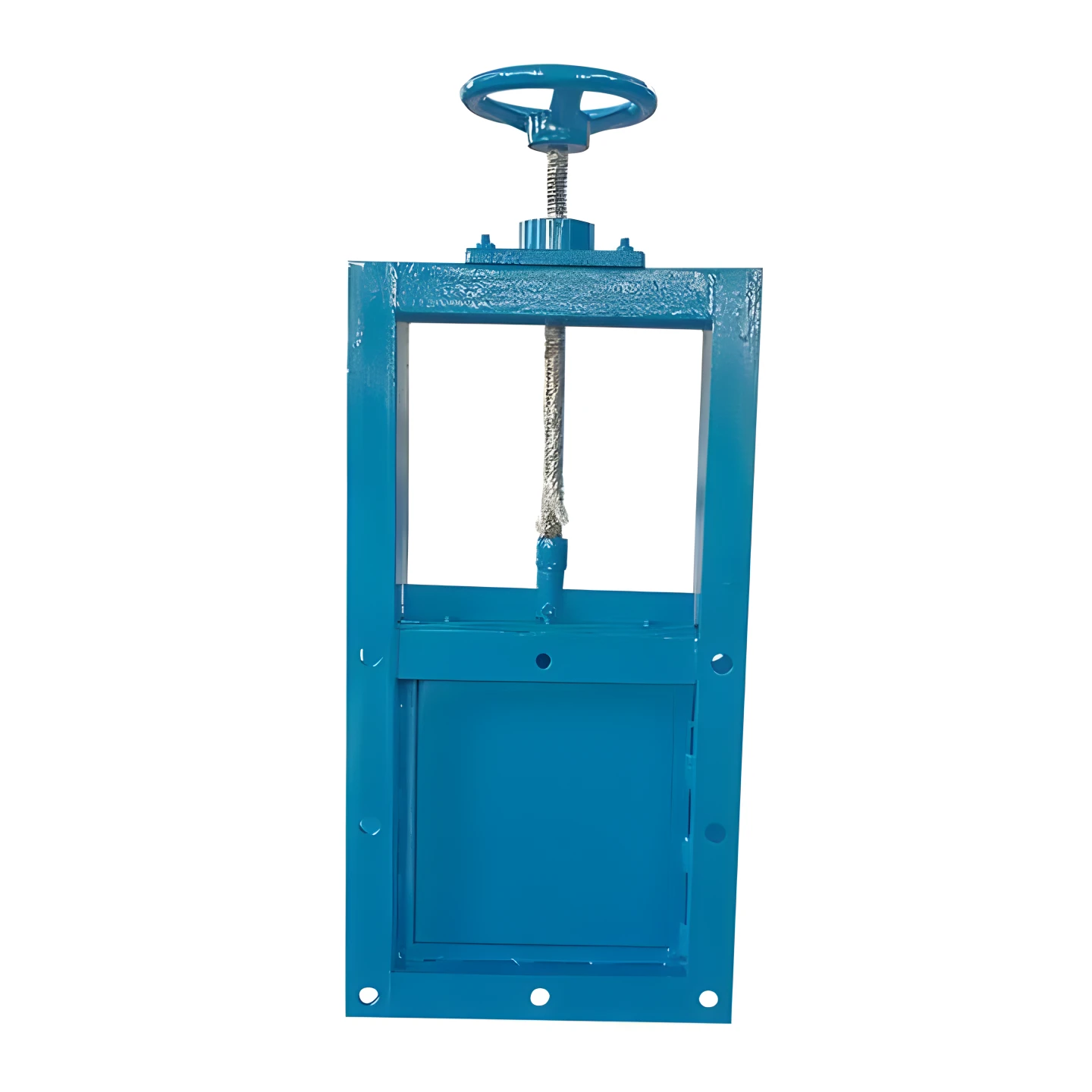| Application | General | Place of Origin | Shenzhen, China |
|---|---|---|---|
| Power | Electric,Hydraulic,Pneumatic,Manual | Customized support | OEM, ODM |
| Warranty | 1 years | Temperature of Media | Medium Temperature |
| Brand Name | TTECH | Media | Water,Dust Material,Mud,Thick pulp,Slurry,Syrup,Oil |
| Product Name | Sluice Gate Valve | Pressure | 0.6Mpa,1.0Mpa,1.6Mpa |
| Structure | Non Return | Working Temperature | -20~280℃ |
| Connection | Flange or other mode |
1. Introduction
The Manual Cartridge Discharge Valve is designed for precise control of fluid discharge in various industrial applications. This valve is available in both stainless steel and carbon steel materials, making it suitable for a wide range of media and operating conditions. The cartridge design allows for easy installation and maintenance.
2. Features
- Material: Available in Stainless Steel (SS304/SS316) and Carbon Steel.
- Design: Cartridge design for easy installation and maintenance.
- Seal: Resilient or metal-to-metal seal options for tight closure.
- Operation: Manual operation for precise control.
- Connection: Threaded, flanged, or welded ends for versatile installation.
- Pressure Rating: Typically up to PN16.
- Standards: Manufactured according to industry standards (e.g., ISO, API).
3. Applications
- Chemical processing.
- Pharmaceutical industry.
- Food and beverage industry.
- Power generation.
- Water treatment plants.
4. Technical Specifications
| Parameter | Specification |
|---|---|
| Valve Size | Various sizes available |
| Body Material | Stainless Steel (SS304/SS316) or Carbon Steel |
| Seal Material | Resilient (EPDM, NBR, etc.) or Metal-to-Metal |
| Pressure Rating | Up to PN16 |
| Temperature Range | -20°C to 200°C (-4°F to 392°F) |
| Connection Type | Threaded, Flanged, Welded |
| Face-to-Face Dimension | According to ISO 5752 or API 609 |
| Media | Various fluids, including corrosive and abrasive |
| Operation | Manual |
| Leakage Rate | Zero leakage (resilient seal) |
| Testing Standard | API 598 |
5. Installation Instructions
5.1 Preparation
- Ensure the pipeline is clean and free of debris.
- Verify that the valve specifications match the application requirements.
- Check the cartridge valve for any damage or defects.
5.2 Alignment
- Align the valve with the pipeline connection (threaded, flanged, or welded).
- Ensure proper alignment to avoid stress on the valve body and connections.
5.3 Connection
For Threaded Connections:
- Apply thread sealant or tape to the threads.
- Screw the valve into the pipeline connection and tighten securely.
For Flanged Connections:
- Align the flanges and insert the gasket.
- Secure the valve using appropriate bolts and nuts.
- Tighten bolts evenly in a crisscross pattern to ensure a proper seal.
For Welded Connections:
- Align the valve with the pipeline.
- Weld the valve into place according to standard welding procedures.
5.4 Testing
- Test the valve for proper operation by manually opening and closing it.
- Check for leaks and ensure the valve operates smoothly.
6. Maintenance
6.1 Regular Inspection
- Periodically inspect the valve for signs of wear or damage.
- Check the seals, cartridge, and manual operation mechanism for any abnormalities.
6.2 Seal Replacement
- Replace the seals if leakage is detected.
- Use compatible seal materials for the specific media and operating conditions.
6.3 Cartridge Maintenance
- Inspect the cartridge for wear and replace if necessary.
- Ensure the cartridge moves freely without obstruction.
6.4 Manual Operation Mechanism
- Ensure the manual operation mechanism operates smoothly and is free from debris.
- Lubricate moving parts if necessary.
7. Safety Precautions
- Ensure the pipeline is depressurized before performing any maintenance.
- Use appropriate personal protective equipment (PPE) when handling the valve.
- Follow all relevant safety standards and guidelines.
8. Troubleshooting
| Issue | Possible Cause | Solution |
|---|---|---|
| Valve does not open/close | Obstruction in the cartridge area | Inspect and clean the cartridge area |
| Leakage through the seal | Worn or damaged seal | Replace the seal |
| Difficulty in manual operation | Debris or damage in the manual mechanism | Clean and inspect the manual mechanism |
Product Show






knife edge gate valve
electric gate valve
manual gate valve
Hydraulic gate valvesolid wedge gate valve
dezurik knife gate valve
pneumatic knife gate valve
parallel slide valve
ci sluice valve
ci gate valve
resilient wedge gate valve
steam gate valve










